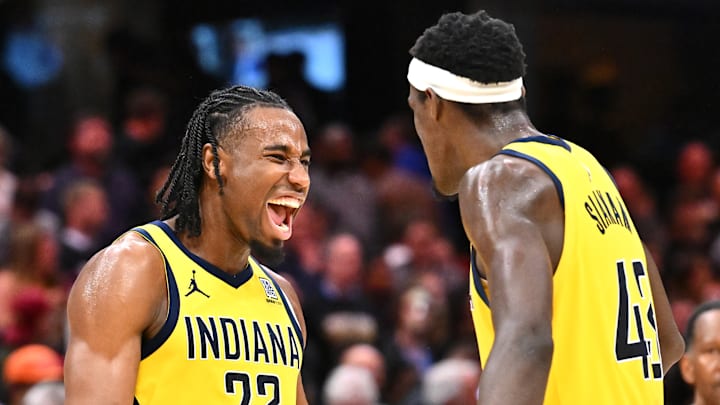The Indiana Pacers are headed to the Eastern Conference Finals for a second consecutive season—and they didn't need to tank to get there. Indiana's success has been a product of calculated risks, meticulous scouting, and bold decision-making in the face of basketball limbo.
The reward has been one of the most fruitful periods in franchise history—and a deep, balanced, and coherent roster flush with players who fit the team's identity.
Indiana's ascension has been defined by a series of decisions that the average front office would've been reluctant to make. The process took a massive turn when the Pacers traded Domantas Sabonis, fresh off of back-to-back All-Star nods, for up-and-coming point guard Tyrese Haliburton.
Haliburton has gone on to emerge as one of the best players and point guards in the NBA, orchestrating a high-octane offense with which few can compete.
Two years later, Indiana made another difficult decision when it went all-in on a trade for pending free agent Pascal Siakam. It knew the risk it was taking, but ultimately built a contender that may have lacked a superstar scorer, but still managed to win two playoff series and thus convince Siakam to re-sign long term.
Compounded by the choice to ignore the widespread calls for Myles Turner to be traded, Indiana's calculated risks set the stage for their anti-tanking mentality to bear fruit.
Pacers proof tanking isn't necessary to build a contender
Indiana's success has come down to one aforementioned skill: Expertly navigating the dangerous territory of calculated risks. In addition to trading for Haliburton and Siakam, and keeping Turner, it's done a phenomenal job of knowing when to take chances on undervalued talent.
Four players epitomize that truth above all others: T.J. McConnell, Andrew Nembhard, Aaron Nesmith, and Obi Toppin.
McConnell, a low-volume player with the Philadelphia 76ers, arrived in Indiana in 2019, endured the team's early woes during its rebuild, and quietly emerged as a game-breaking talent off the bench. Toppin signed in 2023 after struggling to find minutes with the New York Knicks, and has averaged upward of 10.0 points per game in each of the past two seasons as a reserve.
Nembhard and Nesmith, meanwhile, are starters who rank among the most important players on the roster—on both ends of the floor.
Nembhard, selected in the second round of the 2021 NBA Draft, ranked second on the Pacers in assists per game at 5.0 while adding 10.0 points and emerging as the team's resident Donovan Mitchell stopper. Mitchell shot just 23.3 percent on 43 attempts when guarded by Nembhard, and converted 52.4 percent of his shots when defended by anyone else.
As for Nesmith, he's averaged 11.3 points on 40.2 percent shooting from beyond the arc in three years with the Pacers after averaging just 12.7 minutes per game at his previous stop with the Boston Celtics.
With McConnell, Nesmith, and Toppin, the Pacers took a chance on their own ability to get more out of them than their predecessors. With Nesmith, it was a second-round draft pick that opened the door for them to find their lockdown defender.
With a formula worth emulating, the Pacers have become an Eastern Conference power by foregoing tanking in favor of a balanced approach to team-building that valued scouting, internal development, and coaching above a blind pursuit of the No. 1 pick.
